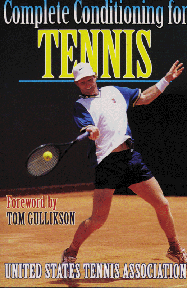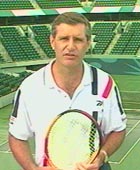Periodization Training for Tennis
Part 4
By Dr. Paul Roetert
In the last article I outlined the tennis specific warm-up the USTA has developed for players at all levels. This dynamic warm-up prepares your body to stretch on a regular basis, a key to playing your best and avoiding injury.
The next two articles outline the tennis specific stretching developed by USTA Sports Science. First stretch for the arms, shoulders, and torso. And in the upcoming article, stretches for the hips and legs.
Flexibility is defined as the degree to which muscles, tendons, and connective tissue around joints can elongate and bend. Few people are as flexible around their joints as they need to be, and tennis places tremendous demands on the joints because of the extreme range of motion required to execute strokes and move well on court.
For example the service motion stresses the front of the shoulder, creating a flexibility imbalance in most competitive and recreational players. Tennis players tend to be extremely flexible in external shoulder rotation, but have limited internal rotation on the their tennis playing side.
Demonstrate this to yourself with a simple comparison exercise:
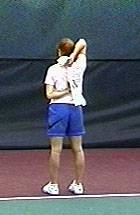 |
 |
|---|
Our tennis specific stretching program for the arms and shoulders is designed to address this imbalance. We recommend specific stretches for the muscles in the back of the shoulder (the external rotators.) We do not recommend or include stretches that stress the front of the shoulder by placing the arms behind the body-such as in a doorway.
There are 3 other kinds of movements in tennis that require extreme range of motion that our stretching program addresses:
- Lateral movement patterns that stress the hip and groin .
- The stabilizing action of the abdominal muscles during the serve
- Explosive court movement patterns involving the calf muscles and Achilles tendon.
Following this program as outlined, will address each of these areas and ensure the range of motion needed to play your best!
Follow these simple steps every time you stretch to maximize the benefits of the program:
- Always warm up for 3-5 minutes as detailed in the previous article. You should break a light sweat.
- Use slow smooth movements, and coordinate this with your breathing.
- Inhale deeply, then exhale as you stretch.
- Take the motion to the point just short of mild pain, then ease back slightly.
- Hold this position for 15 to 20 seconds and breathe normally.
- Repeat the entire procedure 2 or 3 times.
NOTE: You should NOT feel pain. If the stretch hurts or you feel a burning sensation, you are stretching too far.
An ideal time to stretch and make significant gains in your overall flexibility is after aerobic activity. After you do the aerobic portion of your periodization training program, or after a match or an on- court workout, repeat the entire program, following the steps above.
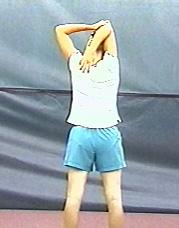 |
|---|
Trunk and Shoulder Stretch
Stand with your arms overhead, holding the right elbow with the left hand. Use your left hand to pull the right elbow behind your head. Hold your elbow in this position, and bend your trunk to the left side. Repeat on the opposite side.
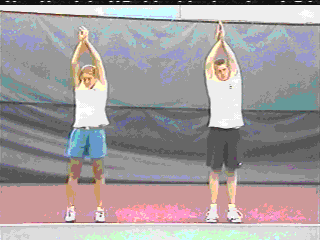 |
Overhead Stretch
Stand with your arms overhead, wrists crossed, and palms together. Stretch your arms as high as you can and slightly backward. Now bend to either side to increase the stretch to your trunk.
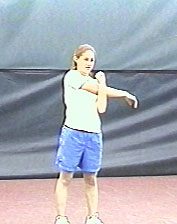 |
Posterior Shoulder Stretch
Hold your right arm straight in front of you. Place your left hand behind your right elbow. Now pull your right arm across the body with your left hand. Don't rotate your trunk. Repeat with the other arm.
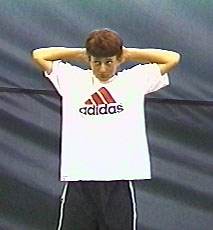 |
Shoulder Squeeze
Interlace your fingers behind your head, with your elbows straight out to your side and your upper body in an upright aligned position. Pull your elbows together, and your shoulders blades back, so that you feel tension throughout your upper back and shoulder blades.
 |
Forearm Flexor Stretch
Extend one arm straight out with the forearm supinated, that is, with the palm up. Use the opposite hand to stretch the wrist back, keeping the elbow straight. Repeat with the opposite arm.
 |
Forearm Extensor Stretch
Pronated, or with the palm down. Use the opposite hand to stretch the wrist downward, keeping the elbow straight. Repeat with the opposite arm.



